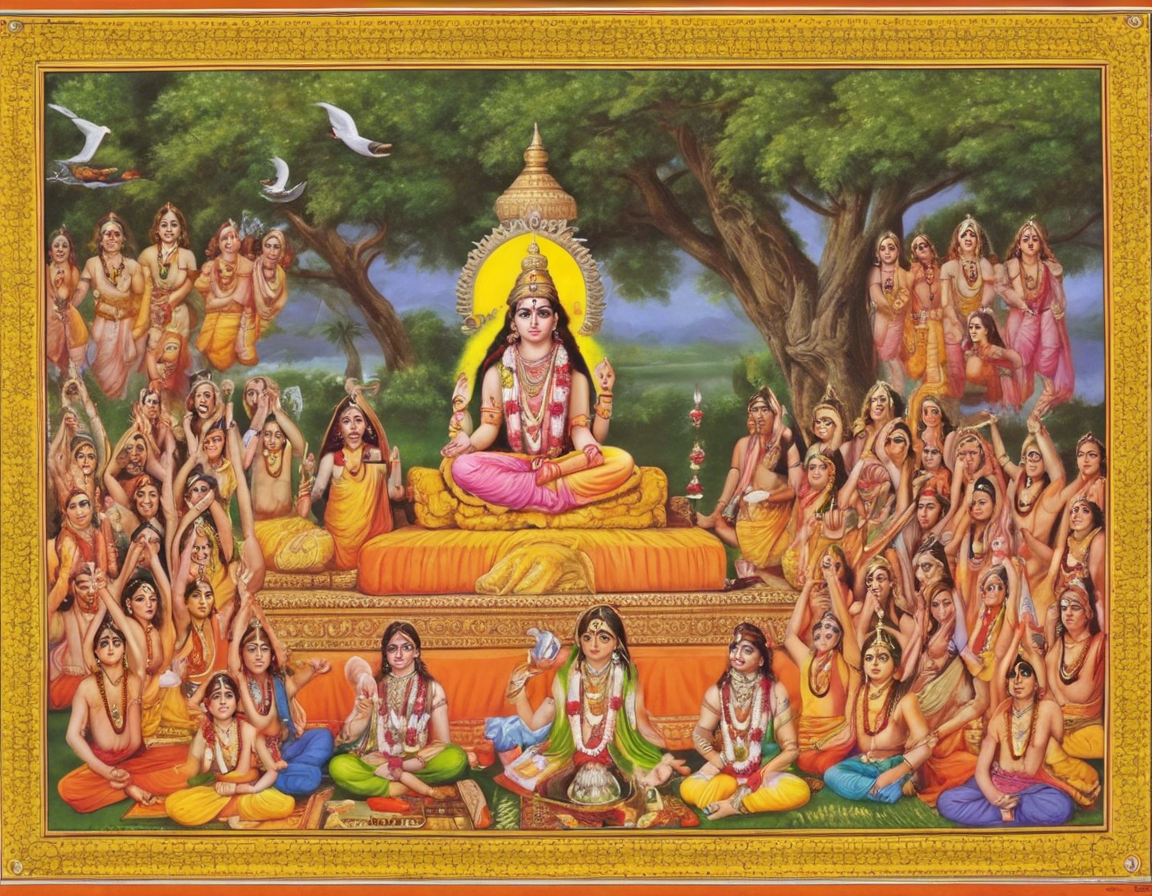Sanatan Dharma: Ek Anant Sanskriti
Introduction
Sanatan Dharma, often referred to as Hinduism, is a vibrant and dynamic way of life that has been practiced for thousands of years. It is a complex system of beliefs, rituals, and practices that have evolved over time and have been shaped by various influences. In this article, we will explore the rich tapestry of Sanatan Dharma and delve into its key teachings, practices, and significance in the modern world.
The Origins of Sanatan Dharma
The term Sanatan Dharma is derived from Sanskrit, with “Sanatan” meaning eternal or everlasting, and “Dharma” referring to duty, righteousness, and cosmic order. The roots of Sanatan Dharma can be traced back to the Vedic period, which dates back to around 1500 BCE. The Vedas, which are the oldest sacred texts of Hinduism, contain hymns, rituals, and philosophical teachings that form the foundation of this ancient religion.
Key Beliefs and Principles
Sanatan Dharma is characterized by a diversity of beliefs and practices that are united by common themes and principles. One of the central tenets of Sanatan Dharma is the concept of reincarnation or samsara, which holds that the soul is immortal and undergoes a series of births and deaths until it achieves liberation or moksha. This belief in the cyclical nature of life and death underscores the importance of karma, or the law of cause and effect, which governs the consequences of one’s actions.
Another key aspect of Sanatan Dharma is the belief in the divine or the supreme reality, which is known by many names and forms, such as Brahman, Vishnu, Shiva, Devi, and Ganesha. These deities are worshipped in various forms and avatars, and devotees may choose to focus their devotion on a particular deity based on their personal inclinations and spiritual goals.
Practices and Rituals
Sanatan Dharma encompasses a wide range of practices and rituals that are designed to help individuals cultivate spiritual awareness and inner transformation. One of the most common forms of practice is puja, or worship, which involves offering prayers, offerings, and rituals to the deities. Yoga and meditation are also integral to the practice of Sanatan Dharma, as they help practitioners develop self-discipline, concentration, and self-awareness.
Festivals and Celebrations
Sanatan Dharma is marked by a calendar of festivals and celebrations that honor various deities, events, and seasons. Some of the most widely celebrated festivals include Diwali, the festival of lights; Holi, the festival of colors; Navaratri, the nine nights of worship; and Dussehra, which commemorates the victory of good over evil. These festivals are joyous occasions filled with rituals, feasting, dancing, and community gatherings.
The Role of Scriptures
Sanatan Dharma draws upon a vast body of scriptures and texts that provide guidance on morality, philosophy, and spirituality. The Vedas, Upanishads, Bhagavad Gita, Ramayana, and Mahabharata are among the most revered and studied texts in Hinduism, offering insight into the nature of reality, the purpose of life, and the path to liberation. These scriptures are interpreted and commented upon by sages, scholars, and teachers who seek to elucidate their profound teachings for contemporary audiences.
Modern Relevance
In today’s fast-paced and globalized world, the teachings of Sanatan Dharma continue to resonate with millions of people around the globe. The principles of unity, diversity, tolerance, and compassion that underpin Hinduism have inspired countless individuals to lead meaningful and ethical lives. The practice of yoga, meditation, and mindfulness, which have their roots in Sanatan Dharma, have gained popularity and recognition for their health and wellness benefits.
FAQs (Frequently Asked Questions)
- What is the difference between Sanatan Dharma and Hinduism?
-
The term “Sanatan Dharma” refers to the eternal way of life and is often used interchangeably with Hinduism, which is a more recent term. Both refer to the same religious tradition.
-
Are all Hindus required to follow the same beliefs and practices?
-
No, Hinduism is a diverse religion with a wide range of beliefs and practices. Individuals may choose to focus on certain deities, texts, or rituals based on their personal preferences.
-
How does one achieve liberation or moksha in Sanatan Dharma?
-
Liberation is achieved through self-realization, self-discipline, devotion, karma yoga, bhakti yoga, jnana yoga, and other spiritual practices outlined in the scriptures.
-
What is the significance of karma in Sanatan Dharma?
-
Karma is the law of cause and effect, which dictates that one’s actions have consequences that affect future lifetimes. By performing good deeds and acting righteously, individuals can purify their karma and progress on the spiritual path.
-
How are women treated in Sanatan Dharma?
- Women are respected and honored in Hinduism, with many goddesses worshipped for their strength, wisdom, and protective qualities. However, gender equality and women’s rights have been issues of debate within the community.
Conclusion
Sanatan Dharma is a profound and inclusive spiritual tradition that has nurtured the souls and spirits of countless generations. Its teachings on dharma, karma, moksha, and divinity offer guidance and inspiration to seekers of truth and wisdom around the world. As we continue to navigate the complexities of modern life, the timeless wisdom of Sanatan Dharma reminds us of the eternal truths that bind us together as one humanity on the journey to self-realization and liberation.
